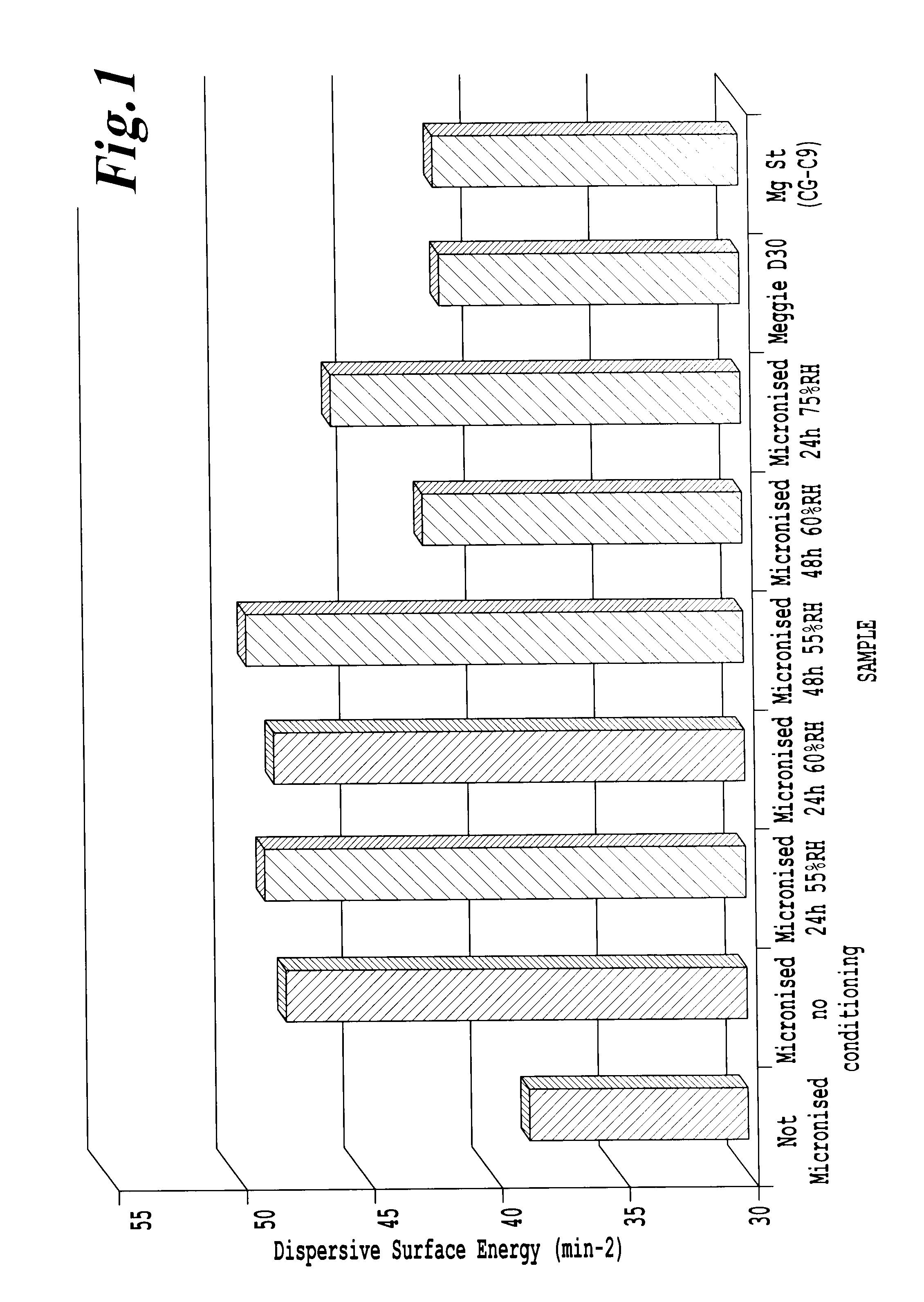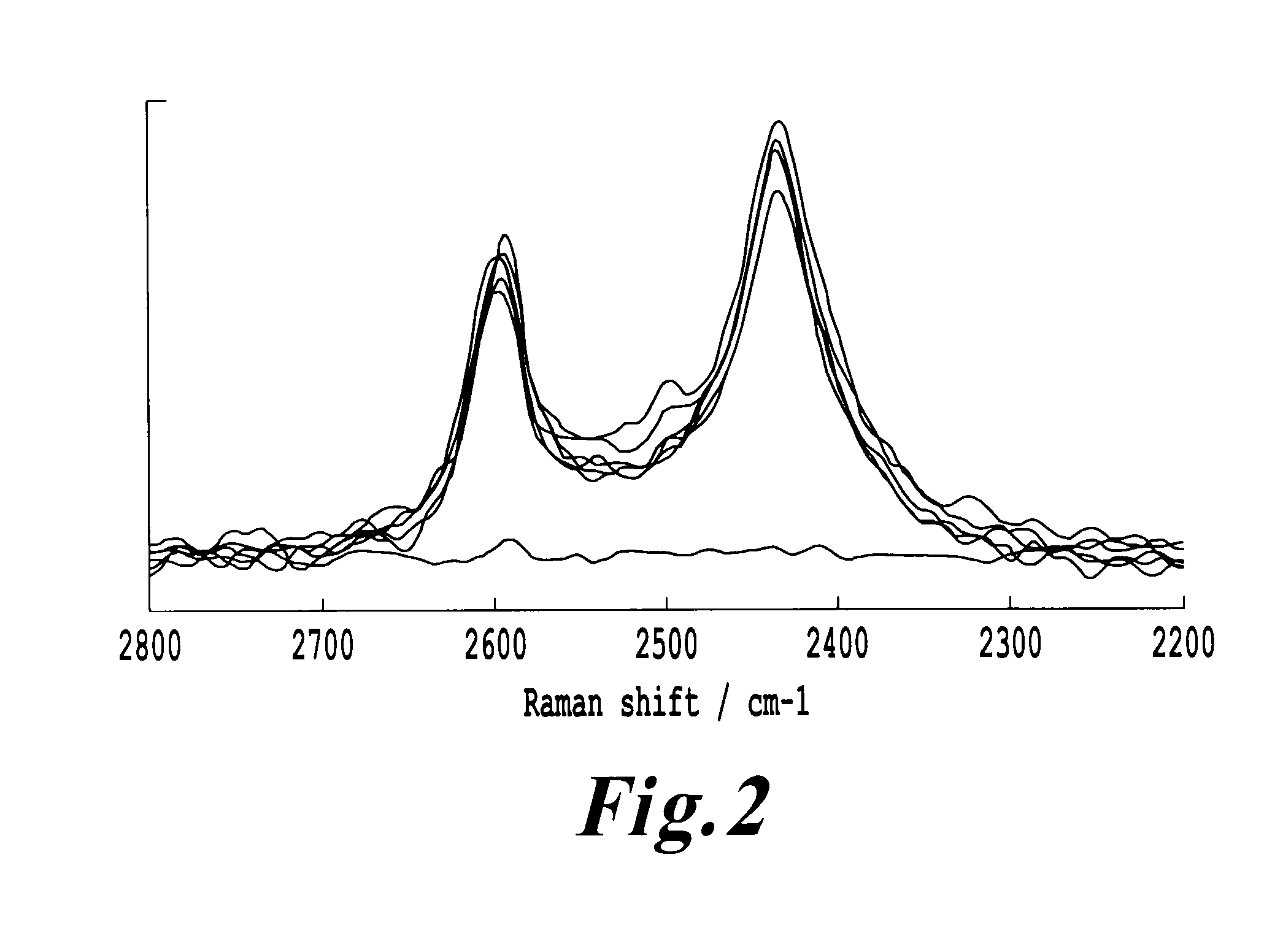Process for providing particles with reduced electrostatic charges
a technology of dry powder and electrostatic charge, which is applied in the direction of biocide, heterocyclic compound active ingredients, drug compositions, etc., can solve the problems of increasing the propensity of materials to build up significant levels of electrostatic charges, complicated and unwell understood process of triboelectrification in pharmaceutical powders, and reducing the electrostatic charge
- Summary
- Abstract
- Description
- Claims
- Application Information
AI Technical Summary
Benefits of technology
Problems solved by technology
Method used
Image
Examples
example 1
Preparation of the Co-Micronized Particles Made of Excipient and Additive
[0141]About 40 kg of co-micronised particles were prepared. Particles of a-lactose monohydrate having a particle size of less than 250 microns (Meggle D 30, Meggle), and magnesium stearate particles having a particle size of less than 35 microns in a ratio 98:2 percent by weight were co-micronized by milling in a jet mill operating under nitrogen to obtain the fraction of co-micronised particles. At the end of the treatment, said co-micronized particles have a mass median diameter (MMD) of about 6 microns. Afterwards, a part of the batch was kept separately as control and the rest was subject to conditioning at a temperature of 22±1° C. at different conditions of relative humidity and time reported in Table 1. The values of relative humidity could vary of ±5%. All the samples were stored in polyethylene bags.
TABLE 1Relative SamplehumidityTime#155%24 hours#255%48 hours#360%24 hours#460%48 hours#565%24 hours#665%...
example 2
Determination of Electrostatic Charges and Fluidization Properties
[0142]Measurements were conducted applying the Nanoer™ technology (Nanopharm Ltd, Bath, UK). A Faraday Pail connected to an electrometer was used to measure electrostatic charge of micronized particles. The electrometer was connected to a computer for data acquisition. 10 g of material was placed into the Faraday cage, following which the specific charge was obtained by dividing the net charge measured on the electrometer by the mass of material that entered the Faraday cage. Micronized parties were characterized using the FT4 Powder Rheometer (Freeman Technologies, Welland, UK) to determine the resistance to aeration quantified as fluidization energy of the different powders. In each case, 10 ml of sample powder was analyzed in a 25 mm bore cylinder. The samples were conditioned to remove packing history using a 23.5 mm blade that was traversed down a helical path at 20 mm / s. As the mass, volume, height and applied f...
example 3
Determination of the Surface Energy
[0145]The surface energies were measured by inverse gas chromatography (IGC). All analyses were carried out using the SMS-iGC 2000 and the SMS-iGC v1.3 standard analysis suite and SMS-iGC v1.21 advanced analysis suite of macros. A flame ionization detector (FID) was used to determine the retention times. The samples were stored in a cold (˜5° C.), dry environment until run on the IGC. For all experiments, the powders were packed into a silanized glass column (300 mm long by 4 mm diameter) using the SMS Column Packing Accessory. All columns were analyzed 3 times sequentially to check for irreversible chemisorption effects and equilibrium after preconditioning.
[0146]In this study, the columns were pre-treated for 2 hours at 25° C. and 0% RH in a helium carrier gas to condition the sample. Then, the surface energy measurements were performed at 25° C. (3 times sequentially with a 2-hour conditioning between runs). All experiments were carried out at 1...
PUM
| Property | Measurement | Unit |
|---|---|---|
| mass median diameter | aaaaa | aaaaa |
| temperature | aaaaa | aaaaa |
| mass diameter | aaaaa | aaaaa |
Abstract
Description
Claims
Application Information
 Login to View More
Login to View More - R&D
- Intellectual Property
- Life Sciences
- Materials
- Tech Scout
- Unparalleled Data Quality
- Higher Quality Content
- 60% Fewer Hallucinations
Browse by: Latest US Patents, China's latest patents, Technical Efficacy Thesaurus, Application Domain, Technology Topic, Popular Technical Reports.
© 2025 PatSnap. All rights reserved.Legal|Privacy policy|Modern Slavery Act Transparency Statement|Sitemap|About US| Contact US: help@patsnap.com



